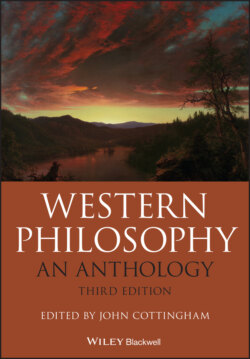Читать книгу Western Philosophy - Группа авторов - Страница 34
PART I Knowledge and Certainty Knowledge and Certainty Introduction
ОглавлениеPhilosophy has always aimed to go beyond our ordinary, unreflective awareness of things. The philosopher typically subjects our everyday convictions to careful logical scrutiny, exposing inconsistencies and misconceptions, and attempting to arrive at a critical standpoint which will enable us to discard what is confused, and to supply a solid rational justification for what is retained. Using the tools of reason, of logical analysis and conceptual clarification, philosophy tries to replace what is doubtful and uncertain with something more coherent and stable. The goal, in short, is to move beyond mere belief, towards systematic knowledge and understanding.
We all realize, in our reflective moments, that many of our beliefs are liable to be mistaken. And even when our beliefs happen to be true, we can often appreciate that this is not much more than a lucky accident – we could equally well have been wrong. But what is the difference between mere belief, and the more stable and reliable kind of cognition that is entitled to be called knowledge, or true understanding? What do we mean by such understanding: how can it be defined, what are its origins, and how is it to be achieved? This fundamental set of questions forms the subject matter of that branch of philosophy known as the theory of knowledge, or epistemology (from the Greek word episteme, meaning ‘knowledge’ or ‘understanding’). From the seventeenth century onwards, epistemology has been at or near the centre of philosophical inquiry. But, as with so many other areas of philosophy, much of the framework for subsequent developments comes from the ideas of the classical Greek thinkers, and of Plato in particular.
